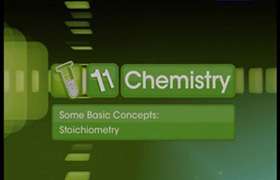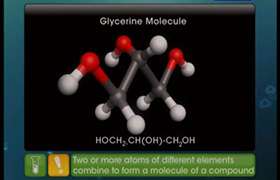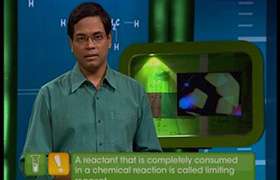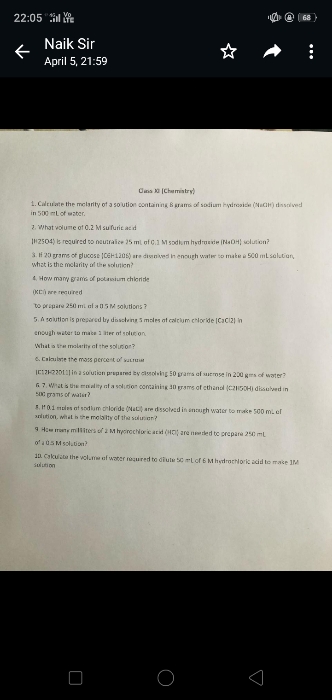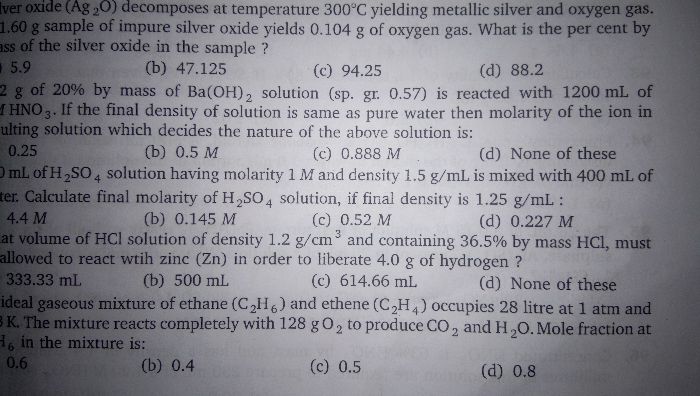CBSE Class 11-science Answered
Can I get general formulas for solving numericals of this chapter??
Asked by polpriyanshu | 13 Apr, 2015, 08:46: AM
- One mole is the amount of a substance that contains as many particles or entities as there are atoms in exactly 12 g (or 0.012 kg) of 12C.
- Following relations given below can be summarized as
- One mole of atoms =
atoms = Gram atomic mass of an element.
- One mole of molecules =
molecules = Gram molecular mass of a substance.
- One mole of atoms =
- The concentration of a solution can be expressed in any of the following ways: Mass per cent, mole fraction, molarity and molality.
- Molarity is the number of moles of solute in per liter of solution. Unit is moles per liter.
- Molality is the number of moles of solute present in 1 kg of solvent.
- Molecular formula shows the exact number of different types of atoms present in a molecule of a compound.
- If the mass per cent of various elements present in a compound is known, then its empirical formula can be determined.
- Where, n is a simple number and may have values 1, 2, 3….
- Following steps should be followed to determine empirical formula of the compound:
- Step 1: Conversion of mass per cent of various elements into grams.
- Step 2: Convert mass obtained in step 1 into number of moles.
- Step 3: Divide the mole value obtained in step 2 by the smallest mole value (out of the mole value of various elements calculated).
- Step 4: In case the ratios are not whole numbers, they may be converted into whole numbers by multiplying by a suitable coefficient.
- Step 5: Write empirical formula by mentioning the numbers after writing the symbols of respective elements.'
Answered by Hanisha Vyas | 13 Apr, 2015, 12:16: PM
Concept Videos
CBSE 11-science - Chemistry
Asked by jayag1298 | 08 Apr, 2024, 03:14: PM
CBSE 11-science - Chemistry
Asked by omniscientnjf2021 | 07 Apr, 2024, 10:18: PM
CBSE 11-science - Chemistry
Asked by hcnainwal | 15 Jun, 2023, 10:39: AM
CBSE 11-science - Chemistry
Asked by Jprmumal29 | 18 Dec, 2022, 09:48: PM
CBSE 11-science - Chemistry
Asked by mallikarjunasangi28 | 22 Jul, 2022, 07:57: PM
CBSE 11-science - Chemistry
Asked by vedwatisharma79 | 10 Jun, 2022, 05:27: PM
CBSE 11-science - Chemistry
Asked by thathvakunjusree | 10 Dec, 2021, 06:46: AM
CBSE 11-science - Chemistry
Asked by udheshraddha2004 | 28 Oct, 2021, 09:37: PM
CBSE 11-science - Chemistry
Asked by arunparewa2000 | 27 Oct, 2021, 06:59: PM
CBSE 11-science - Chemistry
Asked by arttameher038 | 23 Aug, 2021, 07:06: AM

